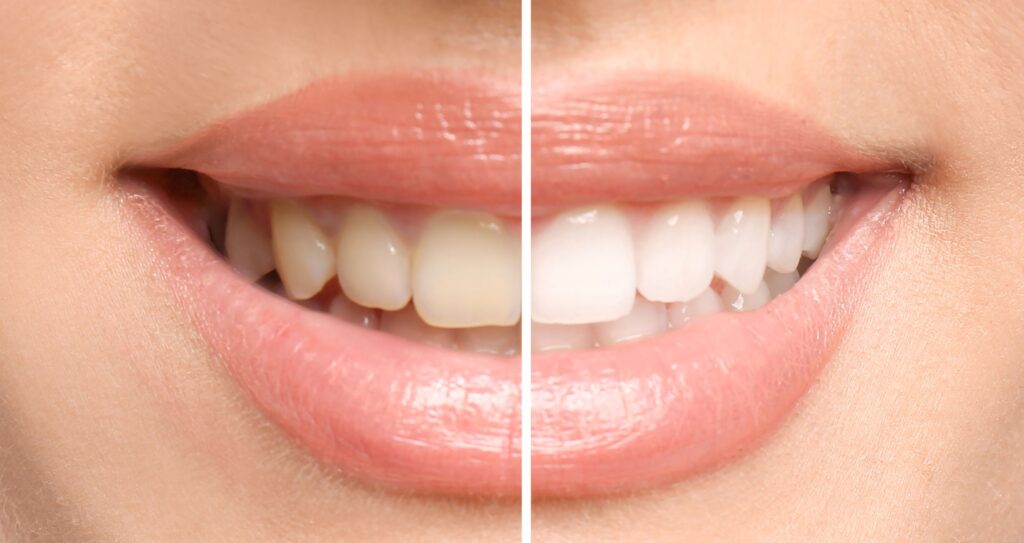
If you consume a lot of dark foods and drinks, like coffee, tea, berries, and tomatoes, you might expect discoloration. Usually, topical treatments like professional teeth whitening with your dentist can effectively remove this type of external stain to brighten your grin. However, your teeth can be blemished even if you avoid these common culprits.
For instance, did you know that your genetics can play a role in determining your natural hue? Continue reading to learn more about how heredity can impact your tooth color!
What Color Are Teeth, Really?
Seemingly, everyone wishes they had a snow-white smile, but very few people naturally come by such idealistic perfection. In fact, many people are surprised to learn that healthy teeth are not pure white but slightly ivory-toned. The outermost layer, or enamel, is bright blue-white, but the underlying dentin layer is more orange or yellow. Because enamel is somewhat translucent, deeper tones shine through, giving teeth their pearly hue.
How Do Genetics Affect My Natural Tooth Color?
If you’re curious whether your lineage can impact the color of your grin, the answer is yes, it can! Like so many other physical features like eyes, hair, and skin tone, the thickness and shade of your enamel are influenced by the genes you inherited from your parents. That means some families naturally have thicker, brighter teeth than others.
There are two inherited conditions known to cause genetic stains in your teeth, and they are:
- Dentinogenesis imperfecta. This disorder affects tooth development, causing weak, brittle enamel that looks grayish or somewhat transparent. It can impact both baby and adult teeth when they erupt.
- Amelogenesis imperfecta. This genetic mutation causes more of a yellow-brown tint and soft, fragile enamel that can be easily harmed.
How Can I Address Genetic Dental Discoloration?
Many people try switching to whitening toothpaste or purchasing over-the-counter solutions only to grow frustrated by a lack of results. The best way to lighten your smile is by consulting with your dentist. Professional whitening treatments can brighten it by up to 8 shades in a single in-office visit if you’re dealing with extrinsic stains in the enamel. Or, if you prefer, many dentists also provide take-home kits with ultra-concentrated bleaching gels and custom-fitted trays for an optimal outcome from your living room.
However, intrinsic stains in the deeper layers of your teeth aren’t always responsive to topical methods and may require another cosmetic solution. Porcelain veneers and dental bonding are popular options that mask imperfections to upgrade your grin.
If you’re still unsure of the cause of your dental discoloration, the best next step is to call your dentist!
About the Practice
At Goodman Dental Care, you benefit from a father-and-son dental duo with 40+ years of combined experience helping people improve their lives by building happy, healthy smiles. They provide a full array of services to patients of all ages so you and your family can all receive the same top-quality care. They combine a compassionate and respectful approach with state-of-the-art equipment to enhance your comfort while delivering accurate, long-lasting results. If you want a lighter grin, you can request an appointment on the website or call (410) 263-1919.

